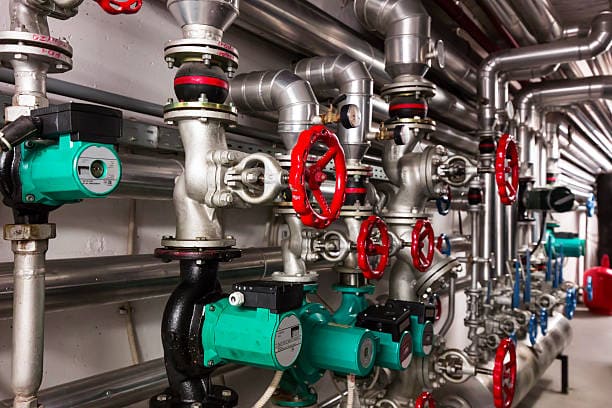Valve control is a crucial aspect of various industrial processes, ensuring the smooth and efficient operation of systems. When it comes to valve actuation, two primary methods are commonly employed: On/Off and Modulating actuators. Each of these techniques has its advantages and considerations. In this article, we will explore the differences between On/Off and Modulating actuators and analyze their optimal use cases to achieve efficient operations.
1. Introduction
Valve actuators play a vital role in controlling the flow of fluids or gases in industrial processes. They are responsible for opening and closing valves, regulating the flow rate, and maintaining system stability. On/Off and Modulating actuators are two prominent methods used for valve control, each offering distinct advantages based on specific operational requirements.
2. On/Off Actuators
On/Off actuators, as the name suggests, operate in a binary manner—either fully open or fully closed. These actuators provide a simple and cost-effective solution for applications where precise control of flow is not necessary. They are commonly used in systems that require quick and reliable shut-off, such as emergency shutdowns and isolation valves.
3. Modulating Actuators
Modulating actuators provide continuous and precise control over valve positioning. Unlike On/Off actuators, they can adjust the valve opening to any position within their range. Modulating actuators are ideal for applications that require fine-tuned flow control, where precise regulation of flow rates, pressure, or temperature is necessary.
4. Factors to Consider
When deciding between On/Off and Modulating actuators, several factors should be taken into account. These include the specific requirements of the industrial process, the desired level of control, energy efficiency considerations, maintenance requirements, and integration with control systems.
5. Choosing the Right Actuator
To select the optimal actuator for a particular application, a thorough understanding of the operational requirements is essential. On/Off actuators are suitable for systems that demand quick and binary control, while Modulating actuators excel in processes that require continuous and precise regulation. Considering factors such as system response time, control accuracy, and energy efficiency will aid in making an informed decision.
6. Efficiency Considerations
Efficiency is a crucial aspect of any industrial operation. On/Off actuators, although simpler in design, can be less energy-efficient compared to Modulating actuators. Modulating actuators allow for gradual adjustments, reducing the overall power consumption and providing better control over system parameters. Energy-efficient operations contribute to cost savings and environmental sustainability.
7. Maintenance and Longevity
Maintenance requirements and actuator longevity are significant considerations in industrial settings. On/Off actuators, with their binary operation, generally require less maintenance and have longer lifespans. Modulating actuators, on the other hand, may need periodic calibration and maintenance to ensure optimal performance. Proper maintenance practices are crucial to maximize the lifespan and reliability of valve actuators.
8. Integration with Control Systems
Seamless integration with control systems is essential for efficient process automation. On/Off actuators can be easily integrated into simple control systems, while Modulating actuators are designed to work harmoniously with more sophisticated control systems. The choice of actuator should align with the existing infrastructure and the desired level of automation.
9. Safety Considerations
Safety is paramount in industrial environments. Both On/Off and Modulating actuators have safety considerations associated with their use. On/Off actuators provide a fail-safe shut-off mechanism, ensuring quick isolation during emergencies. Modulating actuators, with their precise control capabilities, can contribute to enhanced process safety by maintaining optimal operating conditions and avoiding sudden changes that may lead to system failures.
10. Case Studies
Real-world case studies provide valuable insights into the practical applications of On/Off and Modulating actuators. By examining specific industries and their unique requirements, we can gain a deeper understanding of how these actuators are utilized and the benefits they bring to different processes.
11. Conclusion
In conclusion, the choice between On/Off and Modulating actuators depends on the specific operational requirements of an industrial process. On/Off actuators are suitable for quick shut-off applications, while Modulating actuators provide precise control over flow rates, pressure, and temperature. Understanding the factors influencing the selection, such as energy efficiency, maintenance, integration, and safety considerations, is crucial for optimizing valve control and achieving efficient operations.
FAQs
Q1: Can On/Off actuators be used for applications that require fine-tuned control?
No, On/Off actuators are designed for binary control—fully open or fully closed—and are not suitable for applications that require precise regulation.
Q2: Are Modulating actuators more expensive than On/Off actuators?
Modulating actuators are generally more expensive due to their advanced control capabilities and wider range of operation.
Q3: How can energy efficiency be improved with Modulating actuators?
Modulating actuators allow for gradual adjustments, enabling precise control over system parameters and reducing overall power consumption.
Q4: Do Modulating actuators require regular maintenance?
Yes, Modulating actuators may need periodic calibration and maintenance to ensure optimal performance and accuracy.
Q5: Can valve actuators be retrofitted into existing systems?
Yes, valve actuators can often be retrofitted into existing systems, but it is important to consider compatibility and integration with control systems.


